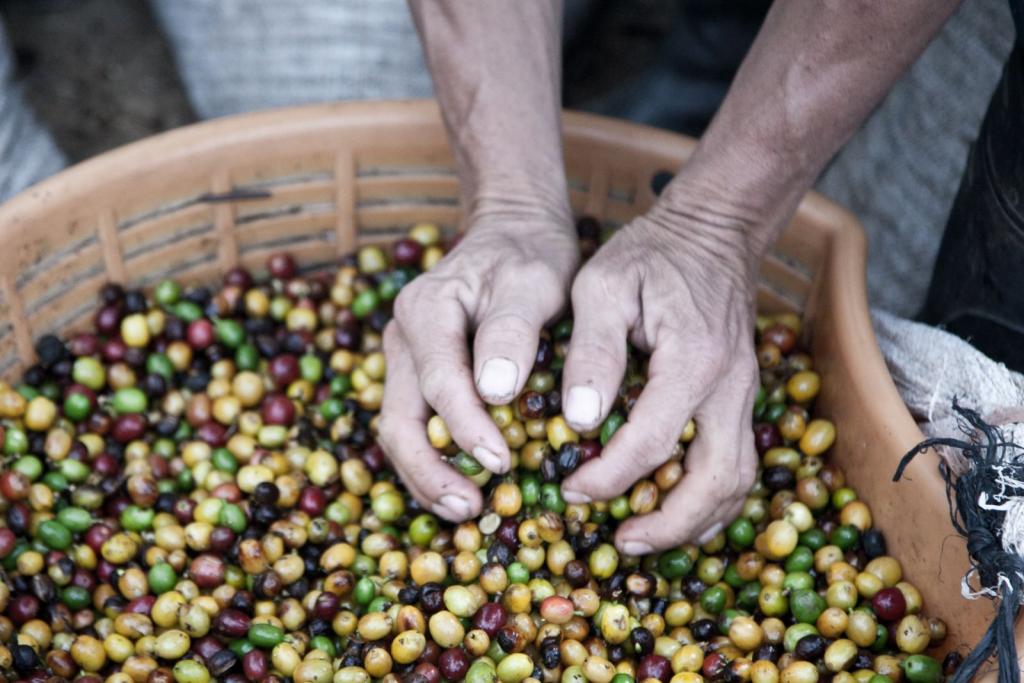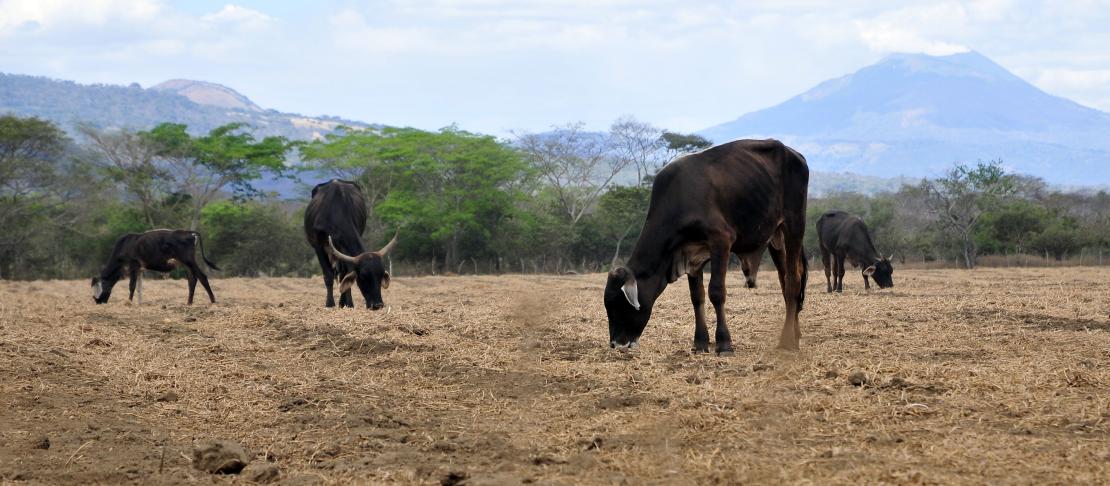Researcher Peter Läderach discusses an initiative that’s helping Costa Rica reduce emissions in agriculture, meeting its ambitious targets.
Costa Rica is a global leader in progressive climate change, agriculture, and food security initiatives. Aiming to be carbon neutral by 2021, Costa Rica is embracing sustainable innovation and collaboration in all of its sectors, and leading the way on mitigation in agriculture.
Because of its enthusiastic spirit, in combination with vulnerability to climate impacts, the country has become a key study area for a number of research programs, including the CGIAR Research Program on Climate Change, Agriculture and Food Security (CCAFS) and the International Center for Tropical Agriculture (
CIAT).
What's a NAMA?
Nationally Appropriate Mitigation Action (NAMA) refers to a set of policies and actions that countries undertake as part of a commitment to reduce greenhouse gas emissions. Learn more. Starting last year, the research team collaborates with the government of Costa Rica, local organizations and research institutions to help the country move from theory to practice with nationally appropriate mitigation action (NAMAs) on coffee production and livestock management.
The project is part of the larger research initiative,
‘Informing policies and institutions for climate-resilient food systems in Latin America', which works in addition to Costa Rica in Colombia, Guatemala and Peru and at regional level through the Central American Agricultural Council. It supports countries developing both their NAMAs and National Adaptation Plans (NAPs) using climate science and tools from CCAFS and other CGIAR Centers. The work forms a key activity under CCAFS
policies and institutions and
low emissions agriculture research, and is led by
CIAT researcher Peter Läderach and his team.
This questions & answers (Q&A) piece with Peter Läderach describes the project’s work in Costa Rica and shares an update and lessons learned from the activities.
Why did you select Costa Rica as your target research area?
I think Costa Rica is really a great NAMA case, as there is political will, many donors, multiple non-governmental organisations, civil society actors, the private sector and of course the government, all engaged in the process. Costa Rica has also worked on their NAMAs for quite some time now, whereas in other countries the governments are still learning what an agriculture NAMA is and how to access funding. There is a lot that can be learned from Costa Rica.
We have also been present in the region for quite some time, so the government knows and trusts our science. In fact, the government has mainstreamed CGIAR science support into policies for several years now. For example, CIAT’s research has already informed Costa Rica’s mitigation plan on coffee.
What’s the current status of agricultural NAMAs in Costa Rica?
The coffee NAMA is by far the most advanced out of the two plans. There is currently about 10 million USD set-aside from various actors to implement the coffee NAMA. International partners involved include the Multilateral Investment Fund (FOMIN) and the German development enterprise GIZ, and many others.
Our primary role has been to provide the science-basis into the process. We’ve already developed a pool of relevant resources for stakeholders, including climate impact modeling, carbon-friendly coffee growth systems, and climate change impacts and adaptation measures for the coffee plant. It looks like the coffee NAMA will be the first implemented agriculture NAMA when it is rolled out in 2015-2016.

Costa Rica's coffee NAMA is by far the most progressed one out of the country's various mitigation activities, and might be the first rolled out agriculture mitigation plan in the world. Photo: I. Zahorsky
And the livestock mitigation plan?
The national livestock mitigation plan is at a start-up level compared to the coffee NAMA, but the team of stakeholders has already been established. We are working with the Costa Rican government, farmers, the private sector, and local and international organizations to develop this NAMA. Getting a livestock NAMA in place is key as the sector accounts for almost 30 percent of national emissions.
We’re providing the latest science, and using it to develop policies that provide both climate and livelihood benefits. In parallel we are working to fast-track the plan through funding a pilot study, rolled out through the new, CCAFS-funded LivestockPlus project in Latin America, and gathering a roundtable of livestock stakeholders to discuss opportunities and challenges around this type of work.
Is providing relevant science the main goal of your project?
While the agricultural and climate science is the basis of the work, CIAT and CCAFS are providing a bridge between science and policy through engaging and building relationships with key stakeholders and widely sharing research.
We also translate science – showing how to use it in fields and forests and enable large-scale implementation through policy, and we share information with other countries. Basically we help open up activities to neighboring countries to facilitate knowledge exchange with others.
Right now, Costa Rica’s NAMA experiences and knowledge are informing our research project activities in Peru and Colombia and vice versa. For example, Peru recently asked us to support the facilitation of a knowledge exchange on coffee NAMA, as they would like one as well.
What are you hoping to achieve?
We want to help Costa Rica achieve its climate change mitigation and adaptation goals through our science. And we want to ensure that learning feeds into other countries’ climate mitigation and adaptation processes.
What are the constraints and opportunities with this type of work?
The government changed last year in April, and a few weeks went by before the strategy would be enforced the mitigation work that they had committed to. So that is one constraint, the change of administration and staff. You always have to build new relationships with people to keep the project going. But since we’ve been in the region for many years, and several of the new ministers have actually visited CIAT’s headquarters in Cali, Colombia, we have built mutual trust.
While visiting CIAT we reviewed tools and climate data and showed how these contribute to NAMAs. Our partners really appreciated this, and I think the relationship is quite secure at this stage. Policy makers are also happy to have a reliable source of information on agricultural and climate science issues.
Related reading:
- Costa Rica leads the way towards sustainable livestock management
- Costa Rica Smart Farming Will Cut Emissions
- Brief: Climate-smart agriculture in Costa Rica
- All blogs related to this project
Cecilia Schubert works as Communication Officer for CCAFS Flagship 4 Policies and Institutions for Climate-Resilient Food Systems. Story edited by Julianna White, Program Manager for Low-Emissions Agriculture.





